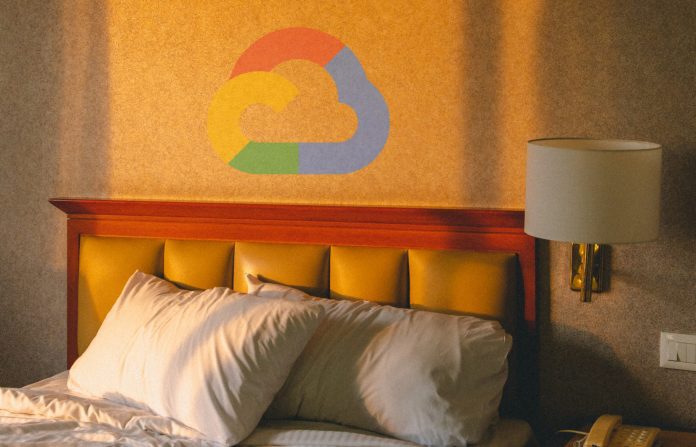It is a good question, and maybe the only question for mobile operators going into the Industry 4.0 space. Camille Mendler, a chief analyst at Omdia, asked it of Google Cloud in a recent webinar, which went under the same header, about why mobile operators should work with hyperscalers at the industrial edge. A couple of other writeups came out of the same session, on edge-drivers and edge-players.
But this was the beef in the sandwich; whether hyperscalers should be considered by operators (‘CSPs’) as partners or competitors. Shailesh Shukla, vice president of product management and general manager of networking at Google Cloud, took it in his stride; it is a “great question,” he said, “which goes to the heart of the dialogue.” Indeed, someone told Enterprise IoT Insights this week telcos are “just a channel to market” for Google Cloud et al.
They want the workload, the story goes, and the “elastic” margins that go with their “elastic” scale. There is a sense they are joined with telcos in some kind of edge-bottleneck, where they will pull the whole ecosystem behind them, and the telcos – by themselves, or via network vendors or system integrators or industrial specialists, or not-at-all in fact – will hold the customer relationship at the other end. And that this is akin to the Android trick with smartphones.
This is an analogy Google Cloud uses itself (see below). The counter-narrative says this is too simplistic; that the customer-end of this ecosystem-flow is more complicated with bespoke networks in industrial plants, say, than with networks for consumers – and that there is proper value in the customer relationship. Just less value, probably, than in this elastic open-source ‘ecosystem’ propped-up by the hyperscalers’ compute, storage, and analytics functions.
Someone else told Enterprise IoT Insights today they think that, when IT finally crosses over with OT in Industry 4.0, “the IT folks will bring their relationships and technical knowledge of the hyperscalers with them”. The response was: “IT doesn’t give a damn about telcos… (and) they aren’t keen on rank-and-file telcos to build engineered [edge] systems; certainly not to run them… IT will push OT to have specialist firms design and build the edge ecosystem.”
There’s the rub; there are too many ways that operators, especially as their monopoly on spectrum has fragmented, are eliminated from the picture, at least at the far edge – on site, in factories and plants. So the question should be rephrased: are they, then, just a channel to market for hyperscalers in the MEC arena, for all manner of IoT mobility services, and are they a channel at all at the far edge, on site, among the control freaks of Industry 4.0? But, then, what is the alternative for them, really?
But let’s hear from Shukla at Google Cloud, who was asked the question directly by Mendler at Omdia. “I believe that CSPs and hyperscalers are natural partners and not competitors going forward,” he responded. “Why? For three reasons.” And he proceeded to count the ways; a transcript of his response, in full, is written-out below.
1 | Industry dynamics
“Firstly, industry dynamics are going to bring us together. We are already seeing that. From a mobile network standpoint, the move towards 5G has massive economic implications for the CSP because the CSP has already invested massively in spectrum. And to deploy and rollout 5G requires more locations, different types of radios. So the cap-ex requirements are enormous.
“But on the other side, the reality is the revenue per customer is not necessarily going to grow at the same rate [as] they are to deploy the capital. [So] if [they] want to improve the economics of 5G, new revenue streams are critical. Where are those going to come from? Either from delivering immersive experiences to consumers, or from a variety of enterprise use cases. And the source of that revenue will be partnership with hyperscalers.”
2 | Enterprise requirements
“Secondly, neither of us can solve the enterprise requirements on our own. CSPs bring next-generation wireless technology, large-scale operational expertise, linkages to enterprises; hyperscalers bring deep understanding of the enterprise. We bring elastic scaling of [the] compute / storage network, automation expertise, as well as AI and analytics around all the data. So we cannot solve this on our own, independently. We must come together.”
3 | Ecosystem enablement
“The third point: think of what Android did to the broader consumer ecosystem around devices and apps. In a similar way, we believe an opening-up of the ecosystem is something this coming-together of CSPs and hyperscalers will enable – so industry specific ISVs, or SIs, or technology players can all be like… I like to say, ‘let 1,000 flowers bloom’. Different use cases will require ecosystem players, and, by coming together, the ecosystem actually flourishes. [So this] natural coming-together as partners will drive the industry forward.”
See the other entries in this series:
Latency, but not as we know it – plus other industry drivers for the move to the edge
Five on treasure island – the key players sharing the spoils at the industrial edge
‘A thousand flowers will bloom’ – should carriers climb into bed with hyperscalers?

